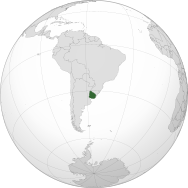The history of Uruguay comprises different periods: the pre-Columbian time or early history, the Colonial Period (1516–1811), the Period of Nation-Building (1811–1830), and the history of Uruguay as an independent country (1830).

Uruguay consists of 19 departments (departamentos). Each department has a legislature called a Departmental Board. The Intendente is the department's chief executive.
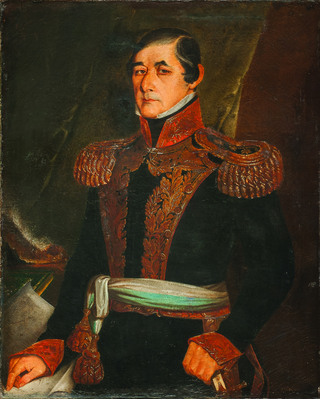
José Fructuoso Rivera y Toscana was a Uruguayan general and patriot who fought for the liberation of Banda Oriental from Brazilian rule, thrice served as President of Uruguay and was one of the instigators of the long Uruguayan Civil War. He is also considered to be the founder of the Colorado Party, which ruled Uruguay without interruption from 1865 until 1958. He made a controversial decision to almost completely eliminate the native Charrúa during the 1831 Massacre of Salsipuedes.

Montevideo is a department (departamento) of Uruguay. It is by far the smallest department in area, but also by far the most populated. Its capital is the city of Montevideo, which is also the national capital. While most of the department is covered by the capital city, there are still smaller towns within its limits.
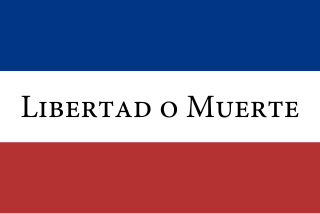
The Flag of the Treinta y Tres is one of the three official flags of Uruguay, along with the National Flag of Uruguay and the Flag of Artigas. Inspired on the flag of the Oriental Province with an added motto it was first used in 1825 in the military expedition of the Treinta y Tres Orientales meant to free the country from Brazilian occupation. In 1952 it was officialized as a national symbol of Uruguay.

Brazo Oriental is a barrio of Montevideo, the capital of Uruguay. Brazo Oriental is a residential zone located approximately 5 kilometres (3.1 mi) from Montevideo's centre.

The Portuguese conquest of the Banda Oriental was the armed-conflict that took place between 1816 and 1820 in the Banda Oriental, for control of what today comprises the whole of the Republic of Uruguay, the northern part of the Argentine Mesopotamia and southern Brazil. The four-year armed-conflict resulted in the annexation of the Banda Oriental into the United Kingdom of Portugal, Brazil and the Algarves as the Brazilian province of Cisplatina.

The Order of the Oriental Republic of Uruguay was a decoration created by the 1973-1985 civic-military dictatorship to award to foreign personalities for extraordinary meritorious acts rendered to the country or for reciprocity purposes. It was eliminated after the repeal of the rule that created it by Law No. 15738. In 1992 the Medal of the Oriental Republic of Uruguay was created.

Foreign relations between the Argentine Republic and the Oriental Republic of Uruguay have existed for over a century. Both countries were part of the Spanish Empire until the early 19th century.

Spain–Uruguay relations are the current and historical relations between Spain and Uruguay. There is community of 67,000 Spanish nationals residing in Uruguay and 33,000 Uruguayan nationals residing in Spain. Both nations are members of the Association of Spanish Language Academies, Organization of Ibero-American States and the United Nations.

Tourism in Uruguay is an important part of the nation's economy.

The president of Uruguay, officially known as the president of the Oriental Republic of Uruguay, is the head of state and head of government of Uruguay. Their rights are determined in the Constitution of Uruguay. Along with the Secretariat of the Presidency, the Council of Ministers and the director of the Office of Planning and Budget, the President is part of the executive branch. In case of absence, their office is exercised by the vice president. In turn, the president of the republic is the commander in chief of the Armed Forces.
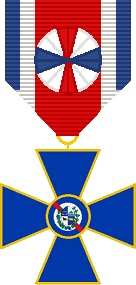
The Medal of Military Merit, is a military decoration of Uruguay. The decoration is awarded by the President of Uruguay. This award replaces the Order of Military Merit of the Companions of Artigas which was discontinued in 1985.
The system of orders, decorations and medals of Uruguay consists of both military and civilian honours presented by the authorities of Uruguay with the purpose of recognising and rewarding actions or services considered praiseworthy.
The Medal of Military Valor is an Uruguayan military decoration awarded by the Commander-in-Chief of the Army to military personnel of that armed force who participated in outstanding acts or events during the fulfillment of duty that involve acts of valor or heroism worthy of being publicly recognized, that help to exalt the image and prestige of the National Army.
The Decoration Honor of Naval Merit Commander Peter Campbell is an Uruguayan military decoration awarded by the President of Uruguay to civilians, military officers, military units or to institutions, Uruguayan or foreign, as a recognition of the relevant services or works performed to the Uruguayan Navy. This decoration was named after Peter Campbell, an Irish naval officer who became the first commander of the Naval forces created by José Artigas.

The municipality of Bella Unión is one of the municipalities of Artigas Department, Uruguay, established on 13 September 2009. Its seat is the city of Bella Unión. It replaced the Autonomous and Elective Local Board of Bella Union created in 1994.
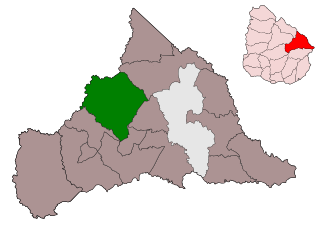
The municipality of Ramón Trigo is one of the municipalities of Cerro Largo Department, Uruguay, established on 3 April 2013. Its seat is the town of Ramón Trigo.
The Delmira Agustini Medal is a civil decoration of Uruguay whose purpose is to honor those citizens, natural or legal, and foreign personalities who contribute or have contributed significantly to culture and the arts who, in the opinion of the Ministry of Education and Culture of Uruguay, deserve such recognition. The medal was created on 4 January 2013 and was named after Uruguayan poet Delmira Agustini.
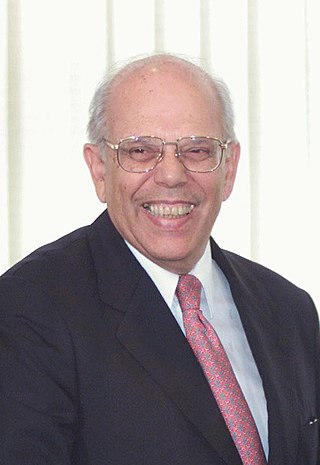
The presidency of Jorge Batlle began on 1 March 2000 when he was inaugurated as the 38th president of Uruguay. Batlle, member of Colorado Party, took office following his victory over the Broad Front Party nominee Tabaré Vázquez in the second round of the 1999 general election, where his party joined to defeat Broad Front that was the winning party in the first round.
